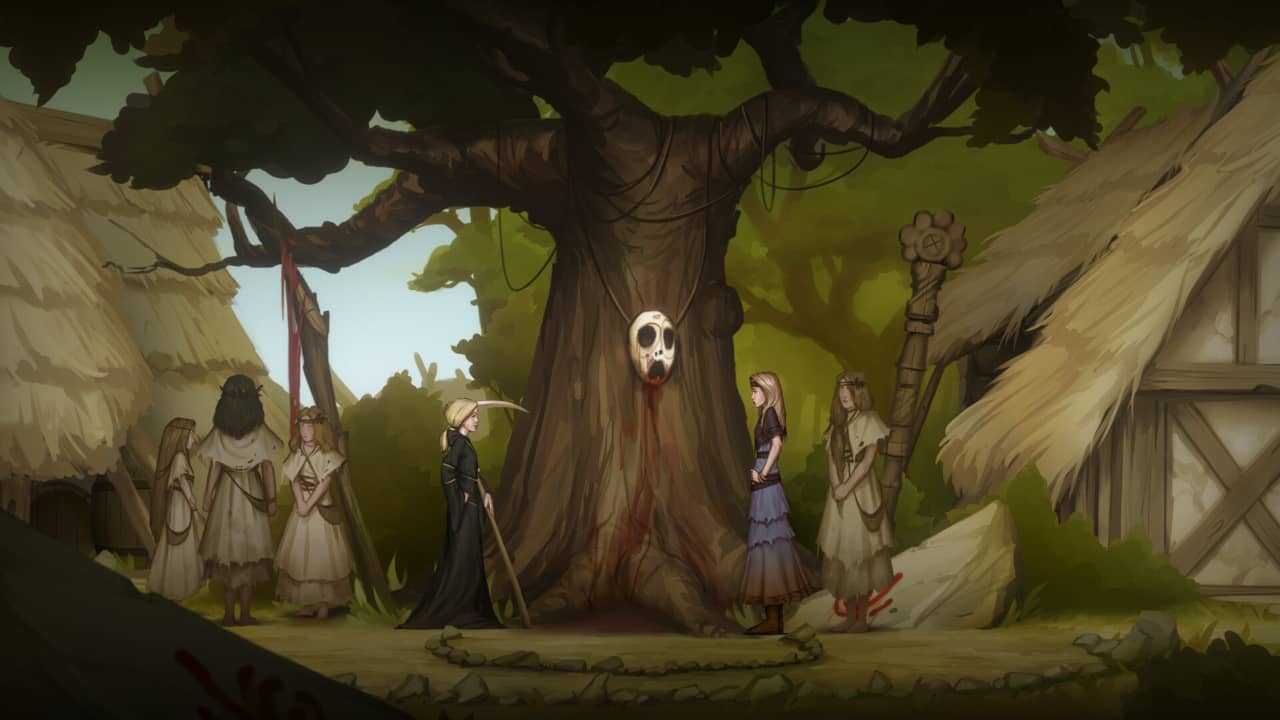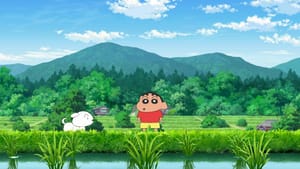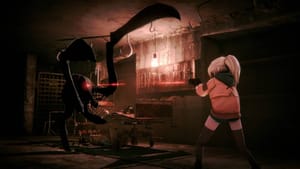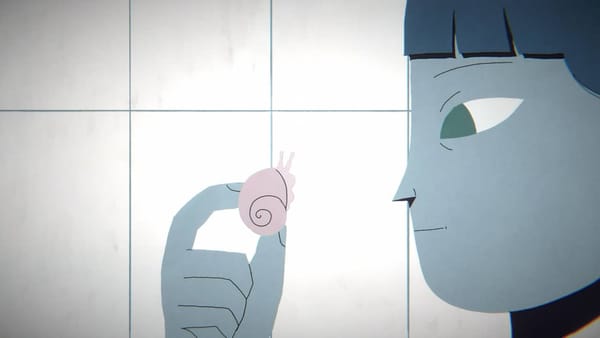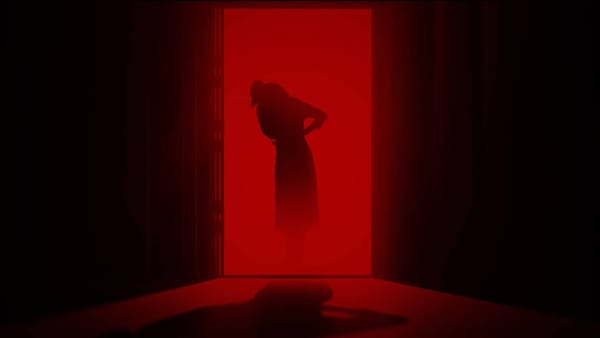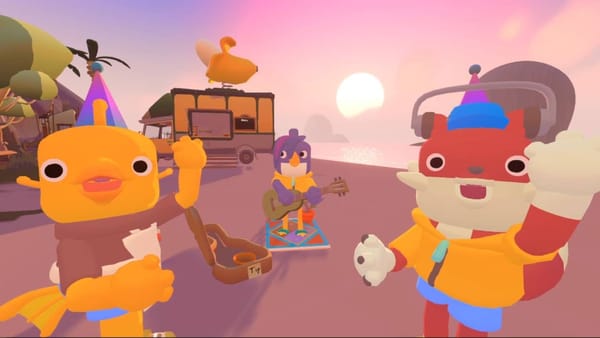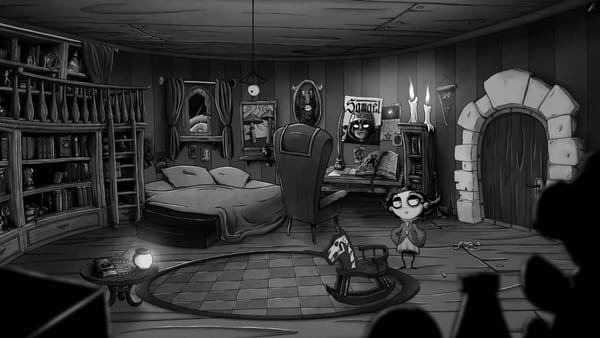There’s quite a thirst for genre crossover/mash-ups, and The Mildew Children is one such game. Part visual novel, part minigames, and other parts a side-scrolling point and click-type adventure, The Growing Stones’ game manages to balance a variety of tastes.
However, the focus should be on the visual novel (an interactive one), as this is a text-heavy narrative-driven story. Some clarification on ‘text-heavy’: that doesn’t mean walls of text, but as this isn’t voice-acted, it’s imperative to stick with it, if not for the tale but for the hints for the many riddles.
Besides, text-heavy games are typically ugly, irrespective of whether the devs use Comic Sans or Didot. The Mildew Children is quite beautiful. The presentation is as diverse as the genres it covers. We have talking heads for each character speaking, the side-scrolling aspects, and gorgeous cutscenes presented in a digital watercolour-like aesthetic.

The Mildrew Children Review – Teen Spirit
The Mildew Children is a tale about a young witch named Kyrphel. When we’re introduced, it’s in the air whether she is accepted by the village she resides in. People can be fickle, but kids are the worst—the place is full of them, and not one adult is in sight.
In her introduction, she’s taking part in a death ritual that is quite dreamlike and a little difficult to follow at first—interesting—but the language is a bit… off. It’s not the vocabulary per se but the way the characters talk. There were numerous occasions where I asked myself, “Is it me?” as I just couldn’t get on with the semantics or the themes.
It becomes clear that the kids rule the roost, and after a quick course on folklore, we find that our dear Kyrphel’s sister has passed. Aside from this being an obvious tragedy, her late sister’s role in a ritual is imperative to the village’s survival. Therefore, our protagonist must recruit another witch in time for the ‘big event’.

Ye Olde Ways
Other than reading the dialogue and monologues, the gameplay element of The Mildew Children is navigating the village in a side-scrolling manner. A ‘world’ map shows you where you are and where you need to go, followed by a fair share of interactions with the citizens and their ominous small talk.
Death is relatable, but riddles and games about bulls aren’t my thing. I didn’t get it and would have skipped through to the main narrative or at least applied praise to the nice visuals throughout. As a cutscene whore since the 90s, the little animatics that segued The Mildew Children’s story together were beautiful and very much welcomed.
Folklore isn’t beyond me. The Excavation of Hob’s Barrow was one of the best games released recently and sparked a further interest in the genre and some much-needed movies that didn’t just revolve around The Wicker Man (the real one, not the beard one). However, the story here wasn’t so relatable. It’s a Slavic tale, and while there’s an abundance of them in the gaming world, nothing here resonated.

She Turned Me Into A Newt! I Got Better…
Perhaps what I’m getting at is I’m either a bit thick, or simply didn’t enjoy it as much as The Growing Stones or Valkyrie Interactive would have hoped. That doesn’t mean that it’s a bad experience, just not for me. As mentioned, The Mildew Children is a gorgeous game and potentially a fascinating subject if you can break through majestic folklore walls made of moonbeams and perplexing text.
As a visual novel, it’s ok. This isn’t a case of clicking through the dialogue for a quick reward. The riddles will stop you in your tracks. I’ve never been good at them, but that doesn’t mean I don’t enjoy them. While you can’t skive from these mental challenges, the time-related minigames can be reduced to something more favourable for the casual gamer or removed altogether. With about ten chapters in the game, there’s plenty to keep you occupied.
The Mildew Children Review Summary
Alright, there will be no IGN summary of 9/10 after the comments above, nor will there be any slating on my watch. I simply didn’t connect with The Mildew Children. Sure, the art is excellent, and there are several parameters to adjust based on preferences (the minigames). Still, the underlying themes were hard to understand because of the sometimes overly complicated writing style.
Try before you buy; there’s a free demo of Chapter 1 on Steam.


